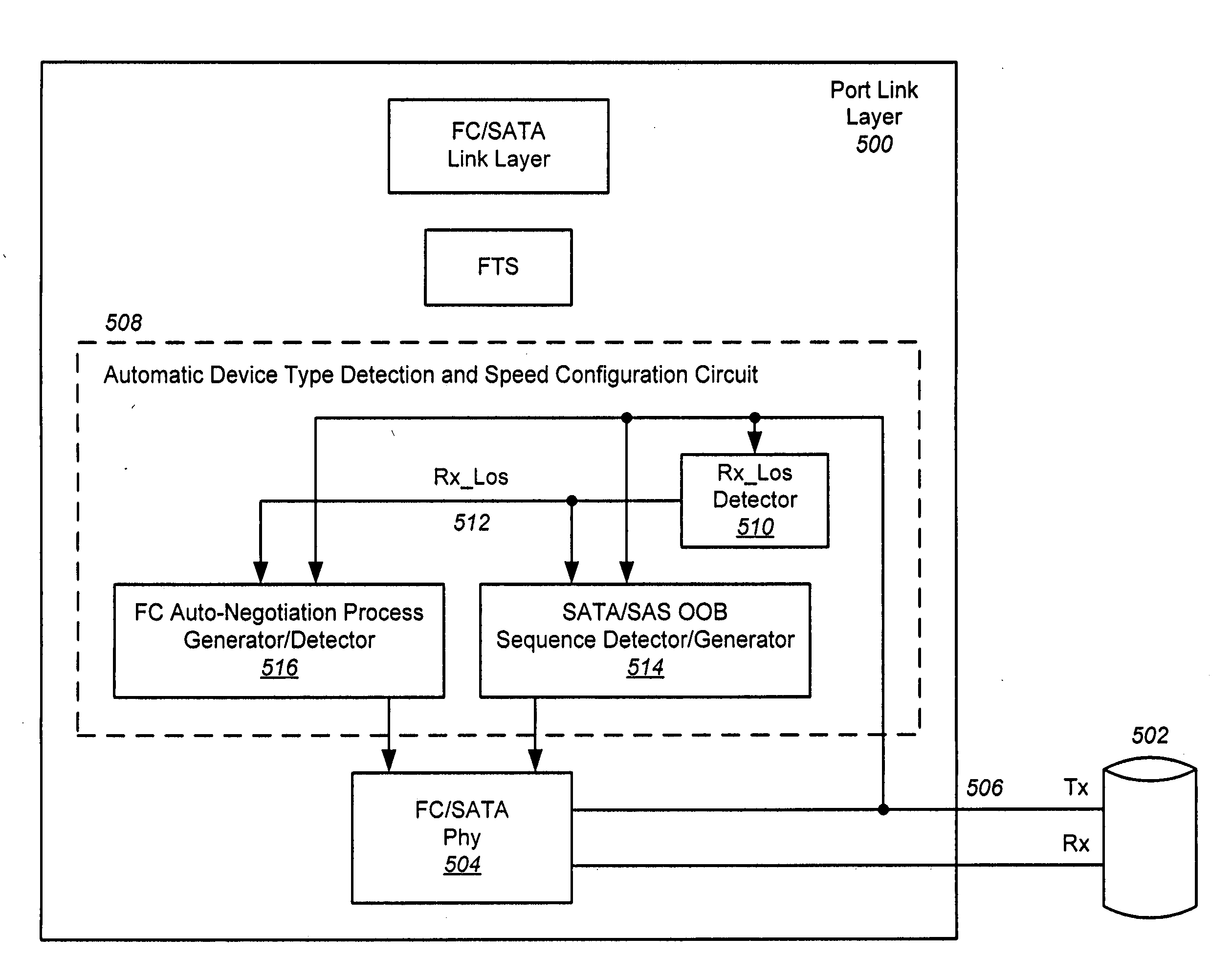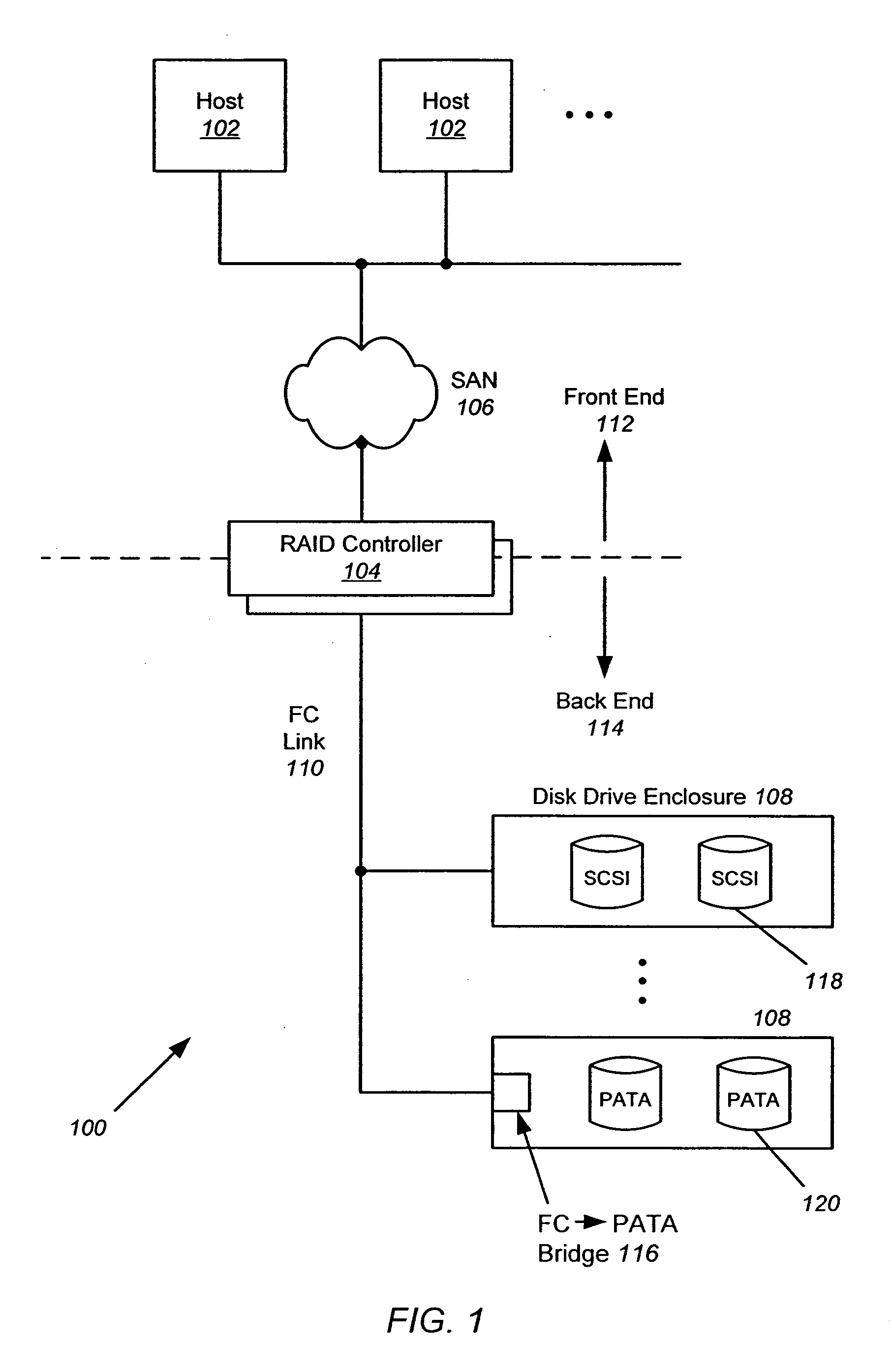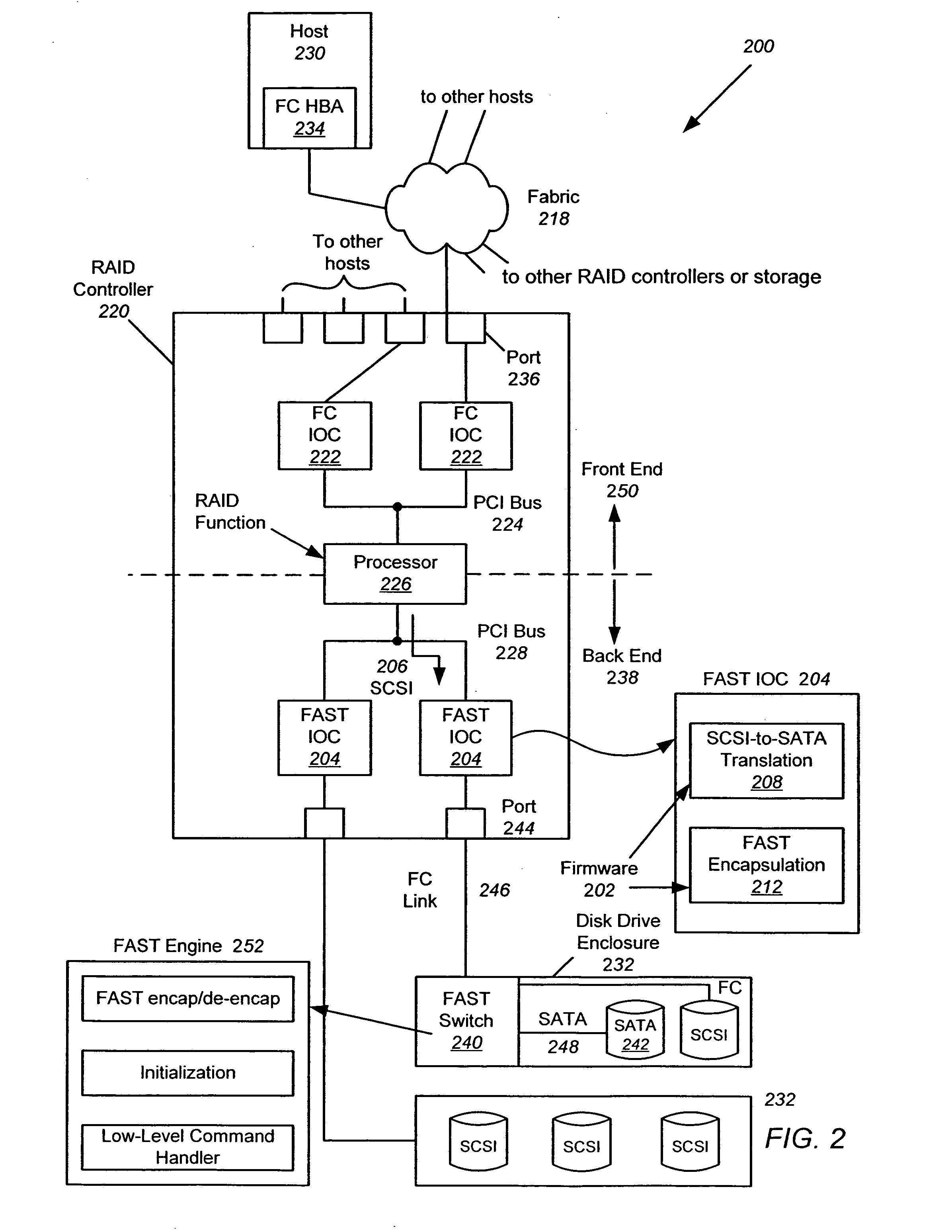Method and apparatus for auto-protocol discrimination between fibre channel, SAS and SATA devices
a technology of autoprotocol discrimination and fibre channel, applied in the field of communication over storage area networks, can solve the problems of inability to meet the needs of users, so as to improve the ease of use of fast switches and free up users.
- Summary
- Abstract
- Description
- Claims
- Application Information
AI Technical Summary
Benefits of technology
Problems solved by technology
Method used
Image
Examples
Embodiment Construction
[0028] In the following description of preferred embodiments, reference is made to the accompanying drawings which form a part hereof, and in which it is shown by way of illustration specific embodiments in which the invention may be practiced. It is to be understood that other embodiments may be utilized and structural changes may be made without departing from the scope of the preferred embodiments of the present invention.
[0029] As described above, the FAST protocol enables both FC and SATA devices to be utilized in the same SAN. However, because FC currently operates at either 1, 2 or 4 GBit / sec data rates, and SATA currently operates at completely different data rates (either 1.5 or 3 GBit / sec), the FC / SATA Phy or SERDES in the Port Link Layer of a FC / SATA port in the FAST switch must be set to the data rate appropriate for the attached device. Embodiments of the present invention automatically detect the device type upon insertion of a device into a FC / SATA port of a FAST-com...
PUM
 Login to View More
Login to View More Abstract
Description
Claims
Application Information
 Login to View More
Login to View More - R&D
- Intellectual Property
- Life Sciences
- Materials
- Tech Scout
- Unparalleled Data Quality
- Higher Quality Content
- 60% Fewer Hallucinations
Browse by: Latest US Patents, China's latest patents, Technical Efficacy Thesaurus, Application Domain, Technology Topic, Popular Technical Reports.
© 2025 PatSnap. All rights reserved.Legal|Privacy policy|Modern Slavery Act Transparency Statement|Sitemap|About US| Contact US: help@patsnap.com



